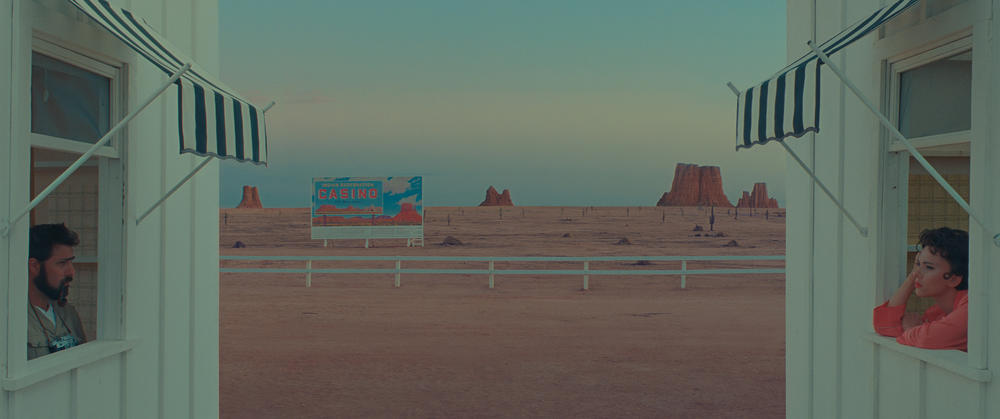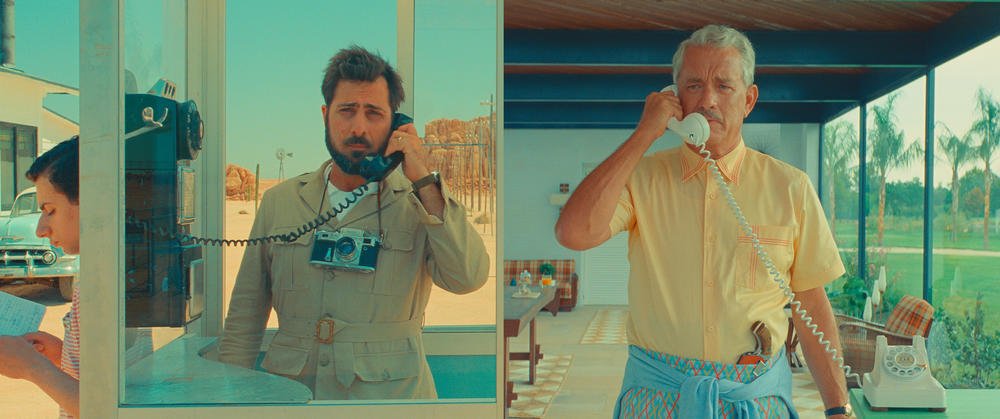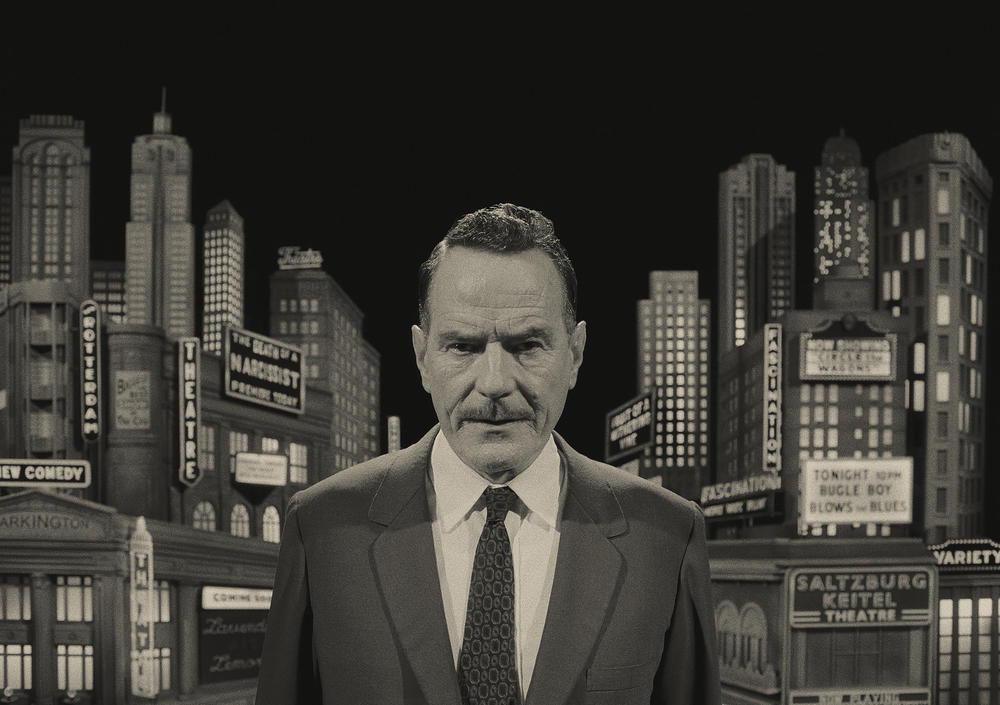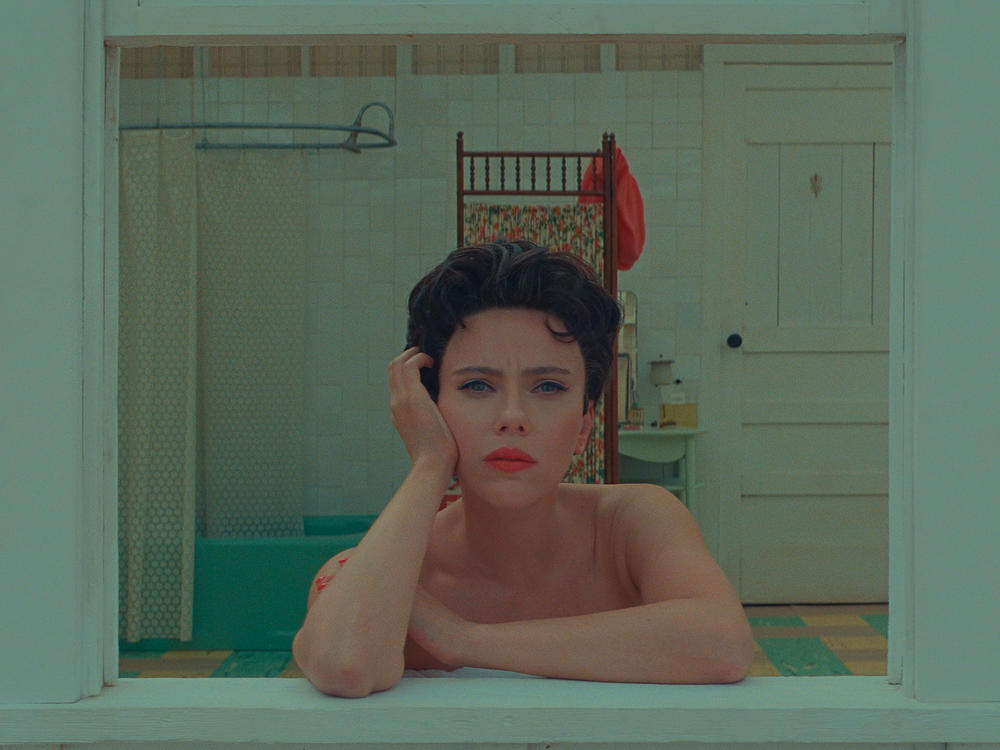Section Branding
Header Content
Wes Anderson has outdone himself with 'Asteroid City'
Primary Content
Asteroid City is one of the most beautiful-looking movies Wes Anderson has ever made, and that's certainly saying something. Anderson is beloved — and sometimes derided — for his extraordinarily meticulous world building, and here he and his longtime production designer, Adam Stockhausen, have outdone themselves. Asteroid City is a 1950s Southwestern desert town, population 87, that's packed with gorgeous retro details: a diner, a motor-court motel, a one-pump filling station. There are also a few tourist attractions, including a giant crater left behind by a 3,000-year-old asteroid, and an observatory that hosts an annual Junior Stargazers convention.
But the movie is also catnip for stargazers of a different kind. Like many of the director's films, it boasts an enormous ensemble that includes several of his regular collaborators, including Jason Schwartzman, Tilda Swinton, Willem Dafoe and Jeff Goldblum. There are also a few A-list newcomers like Tom Hanks and Scarlett Johansson, assuming you don't count her voice work in the animated Isle of Dogs. In Asteroid City, Johansson plays a movie star named Midge Campbell, who's like a cross between Ava Gardner and Marilyn Monroe. She's come to town with her gifted teenage daughter, Dinah, who's receiving an award at the astronomy convention. Midge is eating breakfast at the diner when she hears Augie Steenbeck, a photographer played by Schwartzman, take a picture of her.
Augie is actually the movie's protagonist, and Schwartzman brings a real soulfulness to his deadpan-melancholy line readings. Augie has recently lost his wife — a tragedy he hasn't found the courage to share with their four kids, including his own astronomy-loving teenage son, Woodrow. Tom Hanks gives a sweetly curmudgeonly turn as Augie's father-in-law, who doesn't like Augie much but has come to Asteroid City to support the family and spend time with his grandkids.
Child geniuses and cross-generational conflicts are a staple of Anderson movies like Moonrise Kingdom, The Royal Tenenbaums and especially Rushmore, the film in which Schwartzman made his acting debut. As usual, there's also some inconvenient romance: Woodrow develops a crush on Dinah, just as Augie begins flirting with Midge, a tough-minded kindred spirit who's experienced her share of loss. Eventually, strange things start to happen. Mushroom clouds erupt in the distance, where atomic bomb tests are being conducted. Later, Asteroid City receives a surprise visitor — let's call it a close encounter of the whimsical kind — that will force everyone in town to confront their fears of the unknown.
But that's not even the strangest thing happening in this movie. Here's where I should mention the extremely intricate framing device that Anderson has devised. We're informed at the outset that Asteroid City is actually a 1950s play that's being produced for television, and that production is basically the movie we're watching. But periodically we'll see — in black-and-white footage — what's going on behind the scenes.
Edward Norton turns up as the playwright, clearly modeled on Tennessee Williams. Adrien Brody plays an Elia Kazan-style director. And all the characters we've met in the fictional Asteroid City turn out just to be actors, trying to figure out how to play their parts at a moment when Old Hollywood theatricality is giving way to the more psychologically grounded Method style. It's a radical moment for the movie industry — as cataclysmic, in its own way, as a visit from an alien.
Anderson's narrative formulations get more elaborate with every movie; his previous one, The French Dispatch, was an ode to The New Yorker structured like an actual issue of The New Yorker. The first time I saw Asteroid City, its play-within-a-TV-show-within-a-movie conceit felt too tortured by half. But I warmed to it more on second viewing. Anderson's surfaces can be maddeningly busy, but the ideas he buries within those surfaces tend to reward a closer look. And there's something undeniably poignant about the ultra-rigidity of his style. It's as if he were showing us how little control his characters have, how hard it is for Augie and Midge — and the actors playing them — to cope with the random setbacks and tragedies of life.
If Asteroid City leaves us with anything, it's the idea that scientists and artists may have more in common than they appear. The desire to create a work of art, or to unlock the mysteries of the universe, spring from the same creative impulse. By the end of the movie, none of these mysteries have been solved, but Augie and his family, at least, have reached a place of understanding. Amid so many significant scientific milestones, Anderson suggests, connecting with another person might still be the grandest human achievement of all.
Copyright 2023 Fresh Air. To see more, visit Fresh Air.




